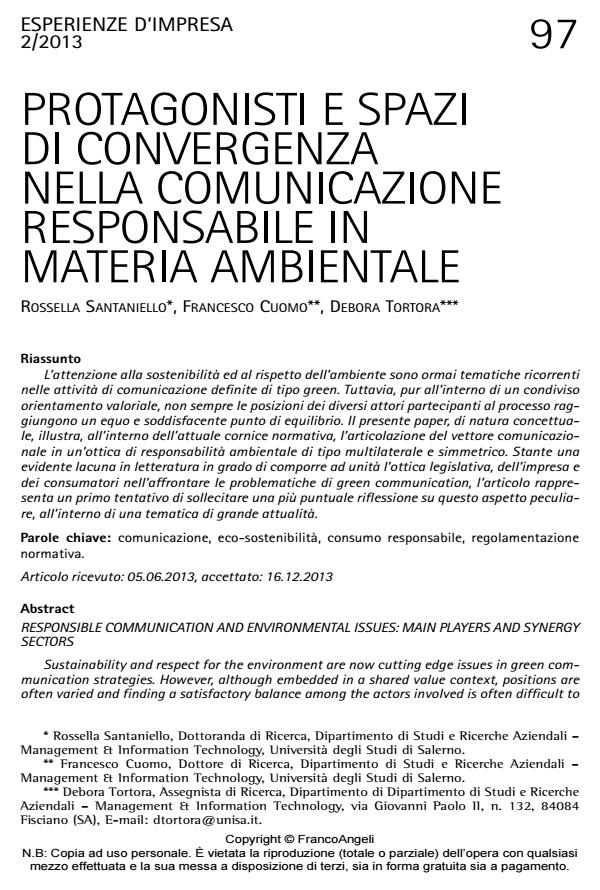Responsible communication and environmental issues: main players and synergy Sectors
Journal title ESPERIENZE D'IMPRESA
Author/s Rossella Santaniello, Francesco Cuomo, Debora Tortoro
Publishing Year 2014 Issue 2013/2
Language Italian Pages 25 P. 97-121 File size 1080 KB
DOI 10.3280/EI2013-002005
DOI is like a bar code for intellectual property: to have more infomation
click here
Below, you can see the article first page
If you want to buy this article in PDF format, you can do it, following the instructions to buy download credits

FrancoAngeli is member of Publishers International Linking Association, Inc (PILA), a not-for-profit association which run the CrossRef service enabling links to and from online scholarly content.
Sustainability and respect for the environment are now cutting edge issues in green communication strategies. However, although embedded in a shared value context, positions are often varied and finding a satisfactory balance among the actors involved is often difficult to achieve. The conceptual paper, within the framework of the laws currently in force, attempts to delineate the structure of communication from a multilateral and symmetrical perspective of environmental responsibility. Starting from the gap in the literature on green communication in order to combine the legislative point of view with the business and consumer ones, the paper represents a first attempt to encourage a more accurate reflection on it, within a very relevant topic.
Keywords: Communication, eco-sustainability, responsible consumption, law regulation
Rossella Santaniello, Francesco Cuomo, Debora Tortoro, Protagonisti e spazi di convergenza nella comunicazione responsabile in materia ambientale in "ESPERIENZE D'IMPRESA" 2/2013, pp 97-121, DOI: 10.3280/EI2013-002005